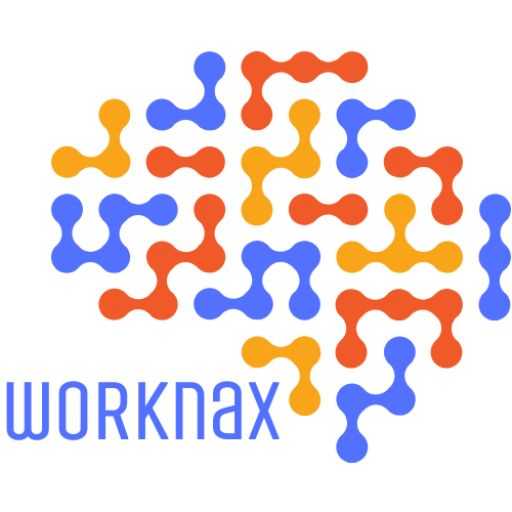Anúncios
What will truly change how your team grows skills next year? This guide gives you a clear, data-backed roadmap to the most important fast learning trends 2025. You’ll get plain explanations, real examples, and practical steps you can try right away.
You’ll see how AI and analytics reshape who learns what, where, and when. We cover mobile-first and micro approaches that meet busy employees on their phones. You’ll learn why soft skills remain a major differentiator in an AI workplace.
Expect short, actionable sections on development, internal mobility, and talent strategies for companies and organizations. Each part includes examples—like VR safety drills or AR repair guides—and simple ways to pilot and measure results.
Key Takeaways
- You get a concise, actionable roadmap to key trends and their business impact.
- AI and analytics will guide role mapping and internal mobility decisions.
- Micro and mobile-first formats help employees learn during work.
- Soft skills keep gaining value alongside technical training.
- Immersive tech and partnerships speed real-world skill development.
Introduction
Learning is the quickest way to close gaps and keep your teams productive under pressure.
Your 2025 learning landscape at a glance
You face a workplace where data and AI guide who needs what skill next. Micro approaches and learning in the flow of work let employees train during short windows. Soft skills rise in importance, and hybrid models widen access across companies and institutions.
Why fast matters for skills, retention, and business impact
Rapid training helps close gaps faster and speeds time-to-competence. That improves retention and keeps your teams ready when priorities shift. Evidence shows gamification and mobile-first formats boost motivation and engagement for most employees.
How this list helps you prioritize the right initiatives
This guide gives practical steps to evaluate initiatives and align them with business goals. Use analytics to track progress and pick pilots that fit your budget and needs. Treat the sections here as a checklist to sequence moves that deliver measurable impact.
Fast learning trends 2025: What you need to know now
A few practical moves will cut time-to-competence and lift team performance.
Search intent decoded: People want quick, actionable items they can plug into existing programs without long lead times. Start with one team, one program, and one metric to prove value.
The forces driving change: AI speeds content creation and personalization. Data helps you align programs to business needs. Persistent skills gaps and pressure to reduce time-to-competence push teams toward micro formats and on-the-job practice.
Snapshot of priorities
- Personalization: tailor paths so learners skip what they already know.
- Data and analytics: target gaps and measure engagement and on-the-job use.
- Flow of work: micro modules and just-in-time help boost retention.
- Soft skills: essential as automation shifts task mix and roles.
Be realistic about challenges like budgets and tool sprawl. Use time-boxed pilots to test an approach that fits your organization’s goals.
Quick takeaway: Use data to target upskilling needs, pick micro formats to raise engagement, and win early support with measurable wins.
AI-driven and data-driven learning: from content to decisions
Smart platforms can map skills across roles and point to the most urgent gaps. Use AI and data to turn scattered training into a clear, measurable approach that your managers can act on.
Build a dynamic skills matrix and map gaps to roles
Start by inventorying skills for each role and capturing current employee levels. Create a company-wide skills matrix that shows who can do what and where a gap exists.
Practical step: export role requirements, run assessments, and let AI group missing skills into priority lists for internal mobility and hiring.
Learning analytics that matter: progress, engagement, and business alignment
Track clear metrics: enrollment, completion, time on task, question difficulty, and application at work.
- Use dashboards to spot friction—like a quiz most employees miss.
- Measure progress milestones and link them to business KPIs.
- Retest after short practice to confirm impact.
Conversational AI and chatbots for instant support and practice
Deploy chatbots to answer on-demand questions, surface micro-lessons, and role-play soft skills. They provide instant feedback and guide next steps.
Governance: protect privacy, document model limits, and keep humans reviewing content and tone.
Start small: pick one role, one gap, and one bot use case. Equip managers with dashboards so they can coach from real progress data as you scale.
Soft skills take center stage in 2025
Human abilities like clear communication and empathy are becoming your team’s biggest advantage.
Communication, leadership, and emotional intelligence are durable, AI-proof differentiators in the workplace. Ninety-one percent of L&D professionals report that human skills are more important than before. That shift matters for retention and team performance.
Use blended approaches. Pair short eLearning modules with role-play and coaching. This builds confidence and real-world application.

Quick steps you can take
- Design scenarios with storytelling to increase engagement beyond badges.
- Use conversational AI for safe practice on feedback and conflict.
- Create role-based development paths so employees see clear growth.
- Track retention and application, not just completion, to prove impact.
Equip professionals and managers with micro-coaching guides for weekly touchpoints. Celebrate milestones and peer wins to sustain motivation. Refresh examples quarterly so content stays relevant.
Read more about the rise of soft skills and practical ways to build these capabilities.
Microlearning and learning in the flow of work
Embed short lessons into daily tools so practice happens while people do their jobs.
Make each unit a tiny task that fits into a coffee break or a ticket queue. Short modules improve focus and respect your team’s time.
Bite-sized, stackable courses for busy teams
Bite-sized, stackable courses
Design modules that take minutes, not hours. Stack them into clear milestones so learners earn a credential after a few steps.
Higher knowledge retention through spaced, contextual practice
Use spaced repetition and quick drills tied to real tasks to boost knowledge retention. Deliver practice inside tools your team already uses—chat, CRM, or intranet.
“Weekly 2-minute modules can move the needle on awareness and real behavior.”
- Keep each lesson focused on one job task and one outcome.
- Add quick self-checks so employees choose the next step.
- Use templates to scale quality across programs.
- Track time to complete and completion rates to refine length and format.
Start a weekly cadence to build a habit of continuous learning and tie modules to clear workplace outcomes like fewer errors or faster ticket resolution.
Personalized learning at scale and adaptive paths
Adaptive paths make your training match each person’s role, prior skills, and career goals.
Why this matters: Tailored paths cut time wasted on repeat content and target real gaps that slow progress. Intake assessments let you exempt learners from known modules so training focuses on what they need.
Adaptive assessments to skip redundancies and close gaps
Start with a short intake test to record what each employee already knows. Use those results to skip redundant modules. For example, contractors can be exempted from basic safety topics when records show prior certification.
Career pathways and internal mobility powered by tailored content
Map specific skills to each role and build curated courses that match career goals. AI LXPs can recommend content and next steps so learners move along a clear path without manual routing.
- Personalize content by role and goal to keep motivation high.
- Use templates, tags, and reusable components so solutions scale.
- Give managers visibility into team progress for targeted coaching.
- Measure time saved and gaps closed per learner to validate impact.
“Start with one intake, one role, and one metric—then scale what works.”
Immersive, gamified, and mobile-first learning experiences
When you mix simulation, story, and phone-friendly modules, employees learn by doing—where they work.
Make high-risk practice safe: Use VR for safety drills and complex procedures where real mistakes cost lives or equipment. VR gives repeated, realistic practice that builds confidence and knowledge without risk.
VR/AR use cases: safety, complex procedures, and real-world simulations
Apply VR for emergency response, hazardous-site walkthroughs, and high-stakes simulations. Use AR overlays for step-by-step repairs, retail setups, or machine maintenance while people work.
Gamification for engagement: beyond points to storytelling and progress
Design gamified courses around a narrative and clear progress markers. People respond best when the goal is mastery through repeated practice, not just badges. Story arcs lift engagement for most employees—one study shows a strong boost when narrative is used alongside game mechanics.
On-the-go training: responsive, mobile-first content design
Plan short sessions that fit the time people have between tasks. Make content responsive so employees can switch devices without friction. Choose authoring tools that simplify VR/AR and mobile production to avoid long custom builds.
- Start with a pilot that compares outcomes against traditional training.
- Use off-the-shelf scenarios to cut cost and speed deployment.
- Measure ROI and address challenges like device access with clear thresholds.
- Teach one way to win: mastery through repeated, meaningful practice.
“Pilot simple scenarios first and scale what clearly improves on-the-job performance.”
Hybrid models, partnerships, and green skills shaping the workforce
Hybrid delivery and strategic partnerships are becoming the engines of scalable workforce development. You can combine institutional reach with EdTech speed to build practical, role-based pathways that match business needs.
Form partnerships that scale. Work with companies and universities to co-create programs and share platforms. Start with a small pilot: define one role, one measurable outcome, and one shared tech stack. Keep governance simple so you can move quickly.
EdTech-company collaborations to scale outcomes
Co-design content with an EdTech partner so your teams get ready-to-use modules. Use hybrid delivery—online modules plus instructor-led practice—to award alternative credentials that employers trust.
- Create solutions that stack: short modules toward recognized credentials.
- Share instructor communities and resources across organizations to speed rollout.
- Align initiatives to business KPIs so leaders fund expansion after early wins.

Integrating green skills into role-based paths
Don’t treat sustainability as an extra. Build green skills—energy management, sustainable design, and environmental stewardship—into core role maps. Ask teams to complete practical projects that show measurable impact.
“Stack short modules into job-relevant projects to prove value and drive growth.”
Use data analytics to track participation, completion, and on-the-job application. Encourage a culture continuous improvement mindset with recurring cycles of feedback and refreshes. Share success stories across companies to accelerate adoption and plan for scale.
Turning trends into impact: implementation, ROI, and risk
Begin with one clear objective and a short pilot, not a full platform roll‑out. Set a measurable outcome first. Pick an approach and the simplest tools that serve that goal. Keep sentences short so teams can act.
Pilot, test, and iterate with learner-centered design
Run a focused pilot for one role. Test usability and engagement. Collect feedback from employees and learners.
- Define outcome and success metric.
- Build a minimal course or bot and test it for two weeks.
- Gather learner feedback and refine.
Balance costs and benefits for AI, VR/AR, and new tools
Compare solutions on cost, speed, and impact. Use off‑the‑shelf options when custom builds are too costly. Be frank: VR/AR can deliver high value but has higher upfront cost and integration challenges.
Data-led optimization for continuous learning culture
Use analytics and learning analytics to find hotspots. Let data drive small, fast iterations. Track progress with simple scorecards to show ROI.
- Set baselines and ROI thresholds.
- Blend coaching and peer practice with digital content.
- Ensure governance: quality checks, privacy, and accessibility.
“Start small, measure what matters, and iterate until the initiative proves value.”
Conclusion
Finish with a clear 90-day plan that targets one or two high-impact skills and a measurable outcome.
Start small. Pick a role, choose a gap, and launch a short pilot. Use data analytics to track engagement, progress, and on-the-job application.
Personalize content where it matters. Combine micro modules, mobile access, and soft skills practice so employees gain confidence and knowledge quickly.
Keep tools simple, celebrate visible wins, and report transparent metrics. Close one or two gaps with tailored training paths and measure retention, performance, and internal mobility.
Show leadership the path: clear milestones, fast feedback, and repeatable success that scales across your teams and workforce.



